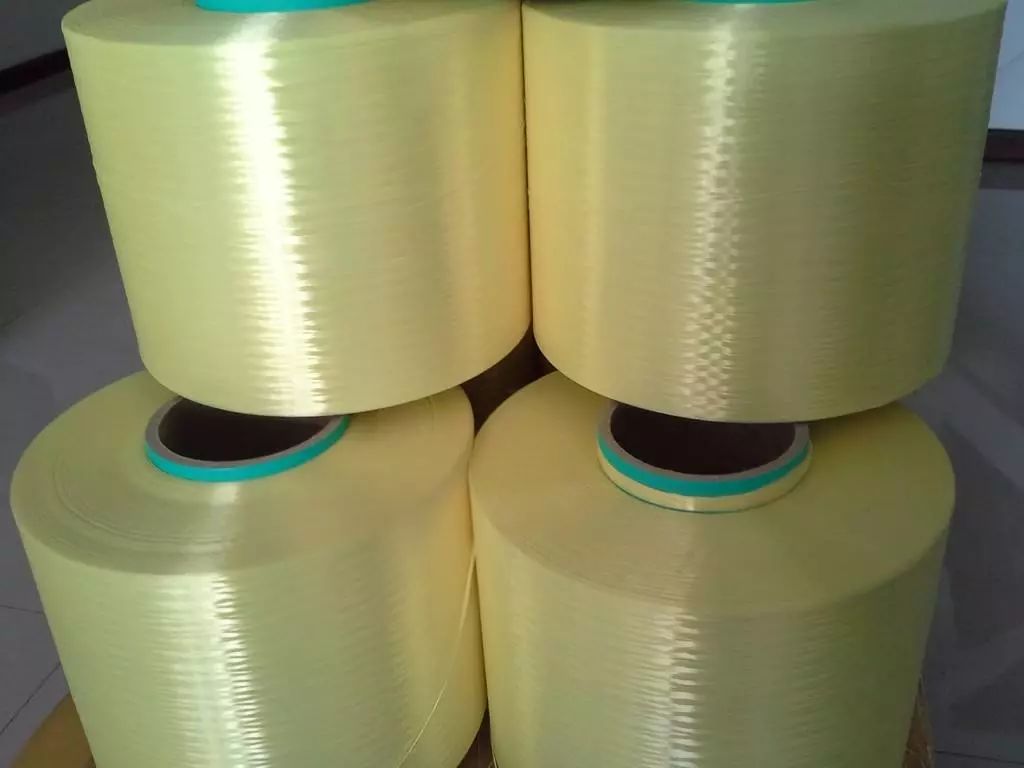Learn about aramid functional textiles
Learn about Aramid Functional Textiles
1. Main contents of the project
Establish aramid fiber and product processing base
2. Main characteristics and usage status of aramid fiber
The full name of aramid fiber is aromatic polyamide fiber. It is a new type of high-tech synthetic fiber. It has excellent properties such as ultra-high strength, high modulus, high temperature resistance, acid and alkali resistance, and light weight. Its strength is 5 to 6 times that of steel wire. The weight is 2 to 3 times that of steel wire or glass fiber, the toughness is twice that of steel wire, and the weight is only about 1/5 of steel wire. It does not decompose or melt at a temperature of 560 degrees. It has good insulation and anti-aging properties and has a long life cycle. It is a kind of high-temperature flame-retardant fiber with high strength, high modulus, low density and good wear resistance. It has high technical content, high added value, excellent mechanical, chemical stability and mechanical properties. It can not only be used alone for various Structural materials and functional materials, and can also be used in combination with other materials. In addition, it also has good resilience and sealing performance, and is not harmful to human health and the environment. It can be used for sealing media such as water, oil, hydrocarbons, and medium-strength acids and alkalis. The gaskets produced have excellent Excellent sealing performance and creep relaxation resistance. It can be used as a substitute for asbestos in friction sealing materials, high-performance heat-resistant insulation paper and reinforced composite materials.

1. Main varieties of aramid fiber
Commercial aramids mainly include meta-aramid and para-aramid. Meta-aramid mainly includes DuPont’s Nomex, Teijin’s Conex, etc.; para-aramid mainly includes Kevlar (DuPont), Technora (Teijin), and Twaron (Teijin). wait.
2. Current research and application status of aramid functional textiles
The unique physical and chemical properties of aramid fiber make it widely used in high temperature resistant, flame retardant, wear-resistant and high-strength functional textiles. Research on it is also in the ascendant around the world. New functional textiles are emerging one after another, and their application fields are constantly expanding.
Aramid fiber is an important national defense and military material. In order to meet the needs of modern warfare, currently, body armor in developed countries such as the United States and Britain is made of aramid. The lightweight of aramid body armor and helmets has effectively improved the military’s rapid response. Responsiveness and lethality. During the Gulf War, U.S. and French aircraft used aramid composite materials extensively. In addition to military applications, it is now widely used as a high-tech fiber material in various aspects of the national economy such as aerospace, electromechanical, construction, automobiles, and sporting goods. In terms of aviation and aerospace, aramid fiber saves a lot of power fuel due to its light weight and high strength. According to foreign data, during the launch process of a spacecraft, every kilogram of weight reduced means a cost reduction of US$1 million. . In addition, the rapid development of science and technology is opening up more new civilian spaces for aramid. According to reports, currently, aramid products are used in body armor, helmets, etc., accounting for about 7 to 8%, aerospace materials, and sports materials accounting for about 40%; tire frame materials, conveyor belt materials, etc. accounting for about 20%. High-strength ropes and other aspects account for about 13%.

2.1 Aramid flame retardant series textiles
Although aramid fiber has good heat resistance and flame retardancy, it is relatively expensive. Secondly, due to the high molecular crystallinity and strong intermolecular binding force, dyeing is difficult. The high price and difficulties in dyeing have inhibited its output and variety development to some extent. As a result, various aramid blended flame-retardant fabrics have been researched and developed to improve the dyeing effect and reduce product prices.
(1) Aramid and wool blended flame-retardant fabric Wool is a natural fiber with certain flame-retardant properties. The aramid staple fiber is first made into strips, and then mixed with top to form yarn, and then weaved. When the proportion of aramid blend exceeds 30%, its limiting oxygen index reaches more than 28. The fabric can achieve good and long-lasting flame retardant properties without flame retardant finishing, and can reduce costs without affecting the appearance and comfort of the fabric. The blending ratio can be adjusted according to the purpose to achieve multi-functionality.
(2) Flame-retardant fabrics blended with aramid and cotton. Similarly, in order to reduce costs and achieve multi-functional requirements, flame-retardant fabrics are made by blending aramid and cotton fibers in a certain proportion. in loveand carrying benefits. However, how fiber fabrics facilitate construction and are easily mastered by ordinary construction workers still requires more in-depth research.
2.6 Aramid tire textiles
Due to the excellent properties of aramid fiber, the mechanical properties of the tire cord produced are basically not affected by temperature at high temperatures. They have low internal friction, low heat generation and long life under the action of alternating stress. Aramid can reduce the volume and mass of tire reinforcement materials, minimize material and energy consumption, and raise some extreme indicators to new heights. In addition, aramid has no rust problem and can replace all metals in tires (including bead wires), saving rubber, thereby enabling tire performance to achieve light weight, reduced rolling resistance, fuel savings, dimensional stability, and uniformity. Good, no flat spots, best high-speed performance, traction and braking performance, good wear resistance and puncture resistance, easy disposal of scrap tires, etc.
2.7 Aramid weftless functional textiles
It is also used for bulletproof, and punctured weftless fabric has better anti-ballistic properties than plain fabric. Because in the manufacturing process of weftless cloth, the aramid fiber material has been fully expanded and fixed by adhesive, and there are no intersecting points between the fibers. When it is impacted by projectiles, it is conducive to the dispersion of energy and can have more energy. With more fibers involved, energy can be absorbed over a larger area, so its elasticity is better.
The surface density of aramid fiberless fabric and the mass fraction of matrix resin are important factors affecting the elastic properties of its laminate. When the weft-free fabric has a smaller areal density and a lower matrix resin mass fraction, the elastic resistance of the laminate will be better.
2.8 Aramid/carbon fiber non-woven fabric
The aramid/carbon fiber non-woven fabric is produced using the puncture method. Its oxygen barrier index LOI is 38~42, and its fire protection temperature reaches 700°C. Mainly used for fire-proof and heat-insulating interlinings, high-temperature dust filters, decorative interlinings, fire-splash covering cloths, etc.
2.9 Aramid/armor steel composite plate
Aramid fiber-reinforced resin-based composite materials have the characteristics of light weight, high strength, good elasticity resistance, and excellent explosion-proof effect. Installing aramid fiber composite plates on armored steel can improve its anti-knock performance. The structure of the material will affect the shock wave attenuation effect of the material. Shock waves are more effectively attenuated when materials are arranged in order of decreasing wave impedance. Materials with a multi-layer structure have better attenuation effects than materials with a double-layer structure, and can obtain protective materials with excellent anti-knock performance.
3. Development direction of aramid fiber
According to the “Twelfth Five-Year Plan”, during this period, my country’s kiloton-level para-aramid production technology will achieve a breakthrough and enter a period of rapid growth, thus driving the rapid development of related industries. Focusing on strategic emerging industries, major national economic construction projects, national defense and military industry, and material industry structure upgrades, the China Chemical Fiber Industry Association conducted a focused analysis of the demand for major downstream application fields, product self-sufficiency rates, and main varieties that need to be imported. In the next 10 years, domestic fields such as automobiles, communications, high-speed railways, aviation and protection will develop rapidly, and the demand for para-aramid fiber will be strong; at the same time, the industrial transfer of foreign downstream processing companies to China will also stimulate domestic production. Growth in demand for para-aramid. Domestic demand for para-aramid fiber will exceed 10,000 tons in 2015 and will exceed 20,000 tons in 2020. Among them, the domestic demand in 2015 is predicted to be 2,000 tons for general-purpose para-aramid filament, 1,000 tons for high-strength type, and 2,000 tons for high-model; 2,000 tons of para-aramid staple fiber; 3,000 tons of para-aramid pulp. In addition, by 2015, the domestic supply of para-aramid fiber will reach 50% and 80% by 2020.
4. Aramid fiber product development
According to the characteristics of aramid special fabrics, the following products can be developed:
1. Bulletproof camouflage uniforms, stab-proof vests, bulletproof and impact-resistant helmets, tank jumpsuits, bulletproof shields, racing suits, etc.;
2. Anti-cutting clothing, anti-explosive clothing, anti-stab clothing, anti-cutting bags, etc.;
3. Headgear, gloves, socks, etc.
4. Labor protection products for children and the elderly
5. Pajamas
6. Aramid non-woven fabric
7. Public safety equipment, transportation safety packaging, and protective devices for vehicles and aircraft




